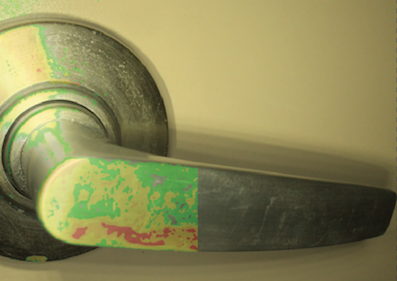 Cleanzine: your weekly cleaning and hygiene industry newsletter 10th July 2025 Issue no. 1170
Cleanzine: your weekly cleaning and hygiene industry newsletter 10th July 2025 Issue no. 1170
Your industry news - first
The original and best - for over 20 years!
We strongly recommend viewing Cleanzine full size in your web browser. Click our masthead above to visit our website version.
HAIs will be Canada's second leading cause of death by 2050... but help is at hand
 According to a recent report by the Public Health Agency of Canada, Healthcare-Associated Infections are currently the country's fourth leading cause of death and could move up to second place by 2050. Help, however is at hand...
According to a recent report by the Public Health Agency of Canada, Healthcare-Associated Infections are currently the country's fourth leading cause of death and could move up to second place by 2050. Help, however is at hand...
OptiSolve and the Kelley Lab at the University of Toronto are to combine novel nanomaterials with a genomics-based approach to allow for precise identification of pathogens that cause HAIs.
This second phase development of OptiSolve's Pathfinder technology will let hospitals, long-term care facilities and retirement homes rapidly detect and identify harmful agents, such as MRSA, C. difficile, and influenza, with the resultant benefits of proactive prevention and quick interventions.
This leap forward in technology was made possible last week when the Honourable Kirsty Duncan, Minister of Science and Sport, announced the awarding of a $4.5 million Genome Canada grant to OptiSolve and the Kelley Lab. The grant focuses on the Detection and Identification of Surface Microbial Contamination in High-Risk facilities.
Historically it has been difficult to measure cleaning effectiveness and meaningfully improve processes or related training. There is a clear need for a system that can identify disease-causing bacteria and viruses on surfaces.
OptiSolve, a division of family-owned Canadian company Charlotte Products, has developed an environmental monitoring system and optical sensor technology, called Pathfinder, which is used to image and assess surfaces for microbial contamination (see picture, which shows the contrast between what we would normally see, & what the technology highlights).
Dr. Shana Kelley and her team are working with the company to further enhance the OptiSolve offering to allow for recognition and identification of specific pathogen species to 'reveal the invisible'.
"The current OptiSolve offering already provides breakthrough precision cleaning capabilities to improve environmental health and safety in all types of facilities - from hospitals to food manufacturing plants to educational facilities and offices - just to name a few," says Tony Ambler, chairman of Charlotte Products.
"However, this grant takes us to the next level because we will be able to identify deadly pathogens such as C. diff and listeria on surfaces, in real time. We couldn't be more pleased!
"The service and technology will significantly reduce HAIs while enabling environmental services and infection prevention managers to avoid taking a 'worst-case scenario' approach to outbreaks, which can include bed closures and cancellation of procedures.
"The result will be improved health of patients, residents, staff, and visitors as well as healthcare savings and risk mitigation. This first-to-market technology will contribute to economic growth and employment for highly qualified personnel."
14th February 2019







